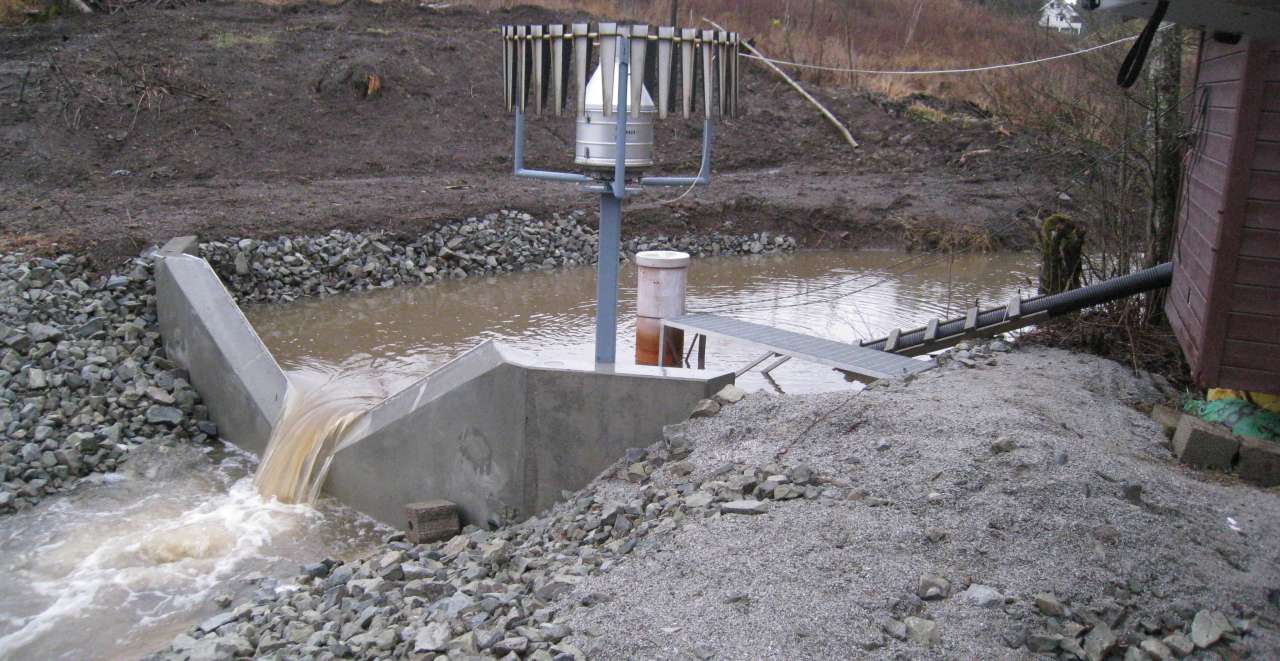
Work methods in JOVA
In 9 of the catchments (4 to 680 ha) farm data are collected from the farmers themselves, as they report all activities on their various fields throughout the year. This includes the smaller catchments. Information on farming in the four largest catchments (20-330 km2), is obtained from Statistics Norway.

Water flow measurements
Most of the monitoring stations are instrumented for continuous measurement of water flow and flow-proportional water sampling. The stations have either installed Crump-weir or V-notch weir. Water height in the weir is measured continuously with a pressure sensor. Water flow is calculated automatically using a data logger, based on the measured water level and a water flow equation for each measurement profile. Sampling is hence proportional to water flow.
Data for water flow, air temperature, water temperature and conductivity are transmitted daily via telephone and modem to NIBIO.
Water sampling proportional to water flow
When a certain amount of water has passed through the monitoring station, the sampler automatically sucks a water sample. The amount varies between stations, but lies between 5 and 100 ml. These samples are mixed and collected in a container which is kept in a refrigerator. From the container we get a mixed sample for lab analysis that is representative for the water flow in the actual period. Mixed samples are normally taken every 14 days and sent for analysis of nutrients, particles and pesticides (only during the growing season).
Random and special water sampling
At the stations without automatic sampling equipment, the samples are taken manually by filling a flask directly from the river. The results from this grab sampling shows the situation on the time of sampling and thus are not representative of a longer period as are the mixed samples. This is normally done only in the Lier and Hobøl rivers, but can occur at other stations if the automatic sampler is out of order and during extreme weather conditions with an expected high risk of nutrient and pesticide leaching.
Laboratory analysis
The standard laboratory analysis to assess nutrient loss and soil erosion includes pH, suspended solids (SS), total phosphorus (TP), dissolved phosphate (PO4-P), total nitrogen (TN) and nitrate (NO3). The analytical methods used to assess pesticide loss include GC Multi-M60, GC/MS Multi-M15 and LC-MS/MS Multi M91 (from 2011), and cover a total of 112 pesticide active ingredients and primary metabolites.
Precipitation and temperature - climate data
Rainfall and temperature are measured in some of the locations. For other catchments climate data are obtained from the nearest station of the Agricultural Meteorological Service (LMT) and The Norwegian Meteorological Institute.
